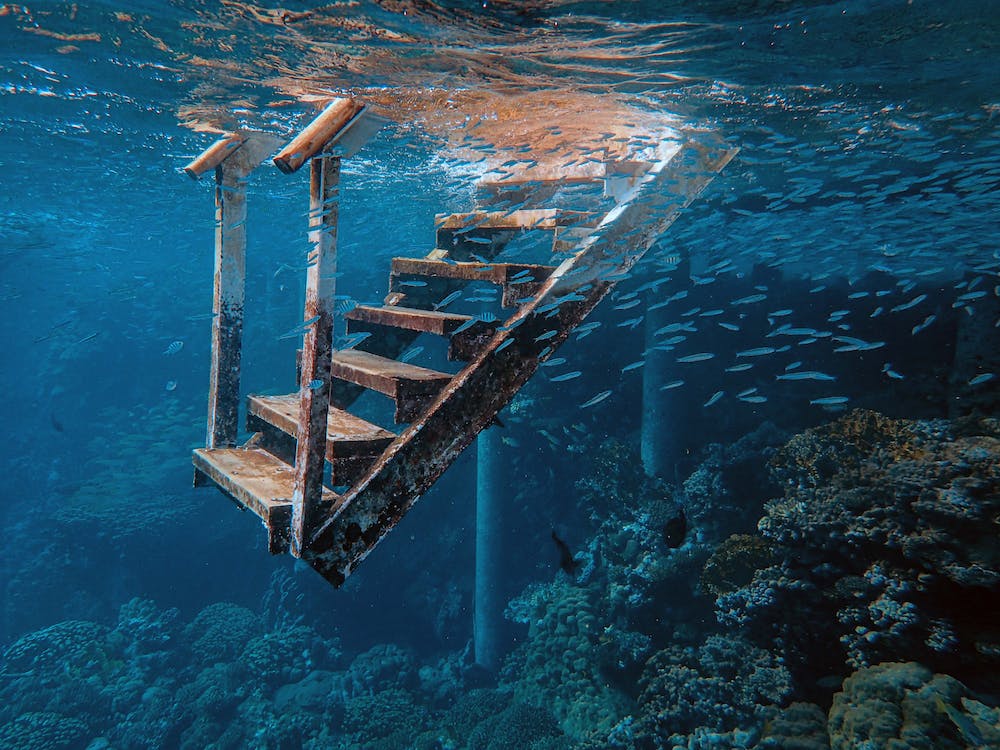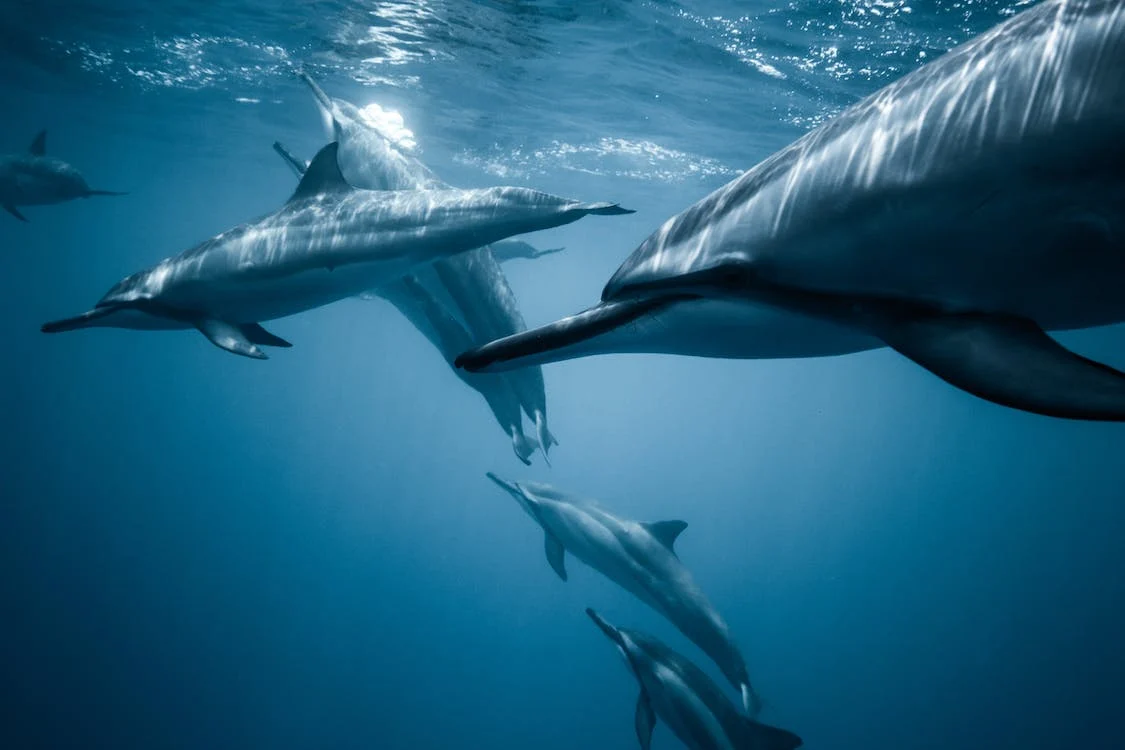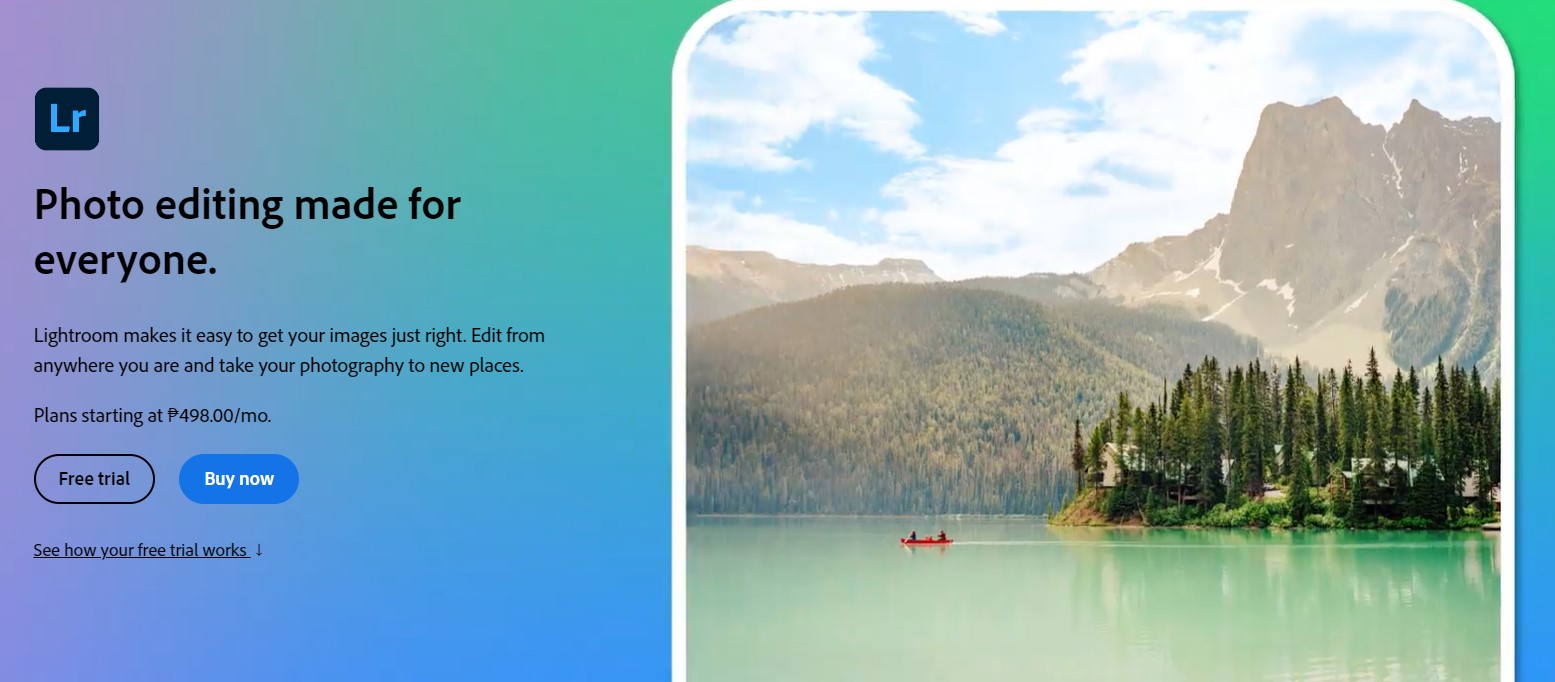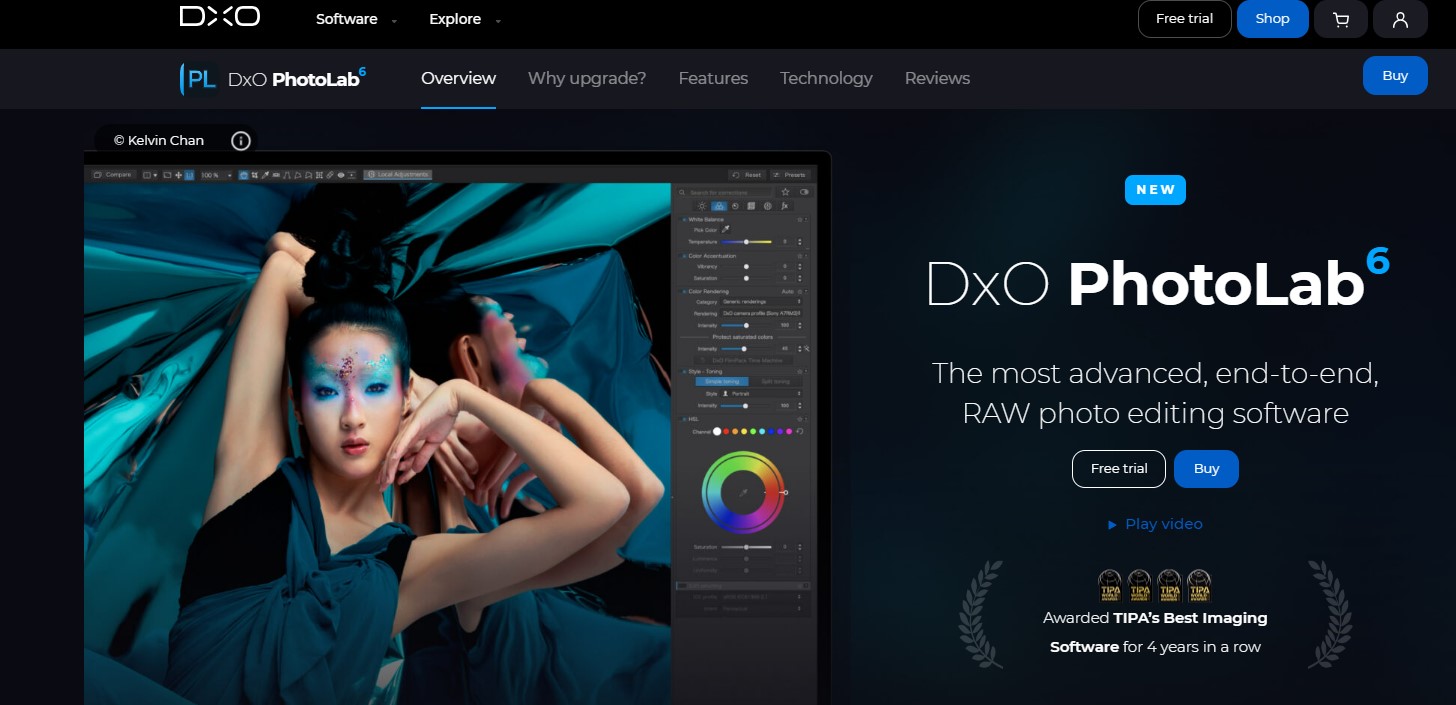Underwater photography is a mesmerizing art form that allows us to capture the vibrant and mysterious world beneath the ocean’s surface. However, the challenges faced by photographers in this unique environment make the role of editing and post-processing crucial in bringing out the true beauty of underwater images. Take a dive (see what we did there?) into this article of underwater photography editing.
Table of Contents
Evolution of Underwater Photography
Exploring the evolution of underwater photography reveals a fascinating journey from early submerged cameras to the advanced digital technologies of today. Technological advancements have significantly impacted the way photographers capture and edit underwater scenes, pushing the boundaries of creativity.
Challenges in Underwater Photography Editing
Underwater photography is an exhilarating pursuit, but its unique challenges make the editing process a specialized craft. Navigating the depths of the ocean presents photographers with distinct hurdles that demand careful consideration during the editing phase.
1. Low Visibility
One of the primary challenges in underwater photography editing is the often limited visibility inherent to aquatic environments. The underwater world can be murky, with particles and suspended matter affecting the clarity of the captured images. Editing becomes a delicate balance of enhancing details without exacerbating the existing haziness. Skilled editors must utilize techniques that mitigate the impact of low visibility while accentuating the natural beauty concealed beneath the water’s surface.
2. Color Distortion
Color distortion poses another significant challenge for underwater photographers. As light penetrates the water, it undergoes selective absorption, leading to a loss of certain colors at different depths. Editing tools must address this distortion, restoring the true colors of the underwater scene. Striking the right balance is crucial; overcompensating for color distortion can result in artificial-looking images, while underediting may fail to capture the vibrancy of the marine environment.

3. Specialized Techniques
Unlike conventional photography, underwater editing requires a nuanced understanding of specialized techniques. Traditional editing approaches may not suffice in this context. Editors need to employ methods tailored to the underwater medium, such as adjusting for the color temperature shift underwater or utilizing filters to counteract specific hues that may dominate the images. Mastery of these techniques is essential for achieving professional-grade results in underwater photo editing.
4. Preserving Natural Ambiance
Maintaining the natural ambiance of underwater scenes while enhancing images is a delicate balancing act. The challenge lies in accentuating the beauty of the marine environment without compromising its authenticity. Striking this balance requires a nuanced approach, where editors skillfully navigate between correction and preservation, ensuring the final result remains true to the essence of the underwater world.
5. Complexity in Composition
Underwater scenes often exhibit intricate compositions with diverse marine life, corals, and varying depths. Editing such complex compositions demands a keen eye for detail. Editors must carefully handle each element within the frame, adjusting exposure, contrast, and color individually to create a harmonious and visually appealing composition. This complexity adds an extra layer of challenge to the editing process, requiring both technical proficiency and artistic sensibility.

6. Equipment Limitations
Photographers’ choice of underwater equipment can pose challenges during editing. Different cameras and lenses may capture scenes differently, impacting the editing workflow. Editors must be familiar with the nuances of various underwater photography equipment to optimize their editing techniques for each setup. This adaptability ensures that the unique characteristics of each photograph are effectively addressed during the editing process.
Understanding and overcoming these challenges are crucial for photographers seeking to excel in underwater photography editing. It is a dynamic interplay of technical expertise, creativity, and a profound connection with the underwater world that enables editors to breathe life into their submerged captures. As technology advances and editing tools evolve, the ability to meet these challenges head-on becomes even more critical for creating visually stunning and authentic underwater images.
Essential Features in Editing Tools for Underwater Photography
Editing tools play a pivotal role in the realm of underwater photography, acting as the alchemists that transform raw captures into breathtaking masterpieces. To effectively navigate the challenges unique to the aquatic world, these tools must boast a repertoire of essential features that cater specifically to the nuances of underwater imagery.

1. Color Correction and Enhancement
Underwater environments often introduce color distortion due to the absorption of certain wavelengths of light. Robust editing tools must include advanced color correction capabilities to restore the natural hues of the ocean. Additionally, the enhancement of colors is crucial for bringing out the vividness of marine life and vibrant coral formations, creating visually stunning images that mirror the true underwater spectacle.
2. Noise Reduction
Low visibility and challenging lighting conditions can contribute to the presence of noise in underwater photographs. Effective editing tools should incorporate sophisticated noise reduction algorithms to address these imperfections without compromising image quality. This feature ensures that the final output is clear, crisp, and free from distracting visual artifacts.
3. Clarity Adjustment
Achieving optimal clarity is paramount in underwater photography. Editing tools should provide precise controls for adjusting the clarity of individual elements within a frame. This feature allows photographers to highlight intricate details in marine life, coral structures, and underwater landscapes, elevating the overall quality of the image and immersing viewers in the intricacies of the underwater world.
4. White Balance Control
Maintaining accurate white balance is essential for preserving the natural colors of underwater scenes. Effective editing tools should offer intuitive white balance controls that allow photographers to fine-tune the warmth or coolness of the image. This feature is instrumental in counteracting color temperature shifts underwater, ensuring that the final result authentically represents the underwater environment.

5. Selective Editing Tools
Underwater compositions often feature diverse elements with varying exposure levels and colors. Selective editing tools, such as brushes and masks, empower photographers to precisely target specific areas within an image for adjustments. This granularity is vital for addressing the unique challenges posed by complex underwater scenes, enabling editors to tailor their corrections to each element’s specific needs.
6. Underwater-Specific Presets
Tailored presets designed specifically for underwater photography streamline the editing process. These presets serve as starting points, offering photographers a foundation for adjustments based on the common challenges faced in underwater environments. Having access to a library of underwater-specific presets can significantly expedite the editing workflow while ensuring consistent and high-quality results.
7. Lens Correction
Different underwater camera setups may introduce distortions or aberrations that affect the overall quality of an image. Editing tools equipped with lens correction features enable photographers to mitigate these issues, ensuring that the final output accurately represents the underwater scene. This feature contributes to the overall professionalism of the edited photographs.
8. HDR Imaging
Underwater environments often exhibit a wide range of lighting conditions, from brightly lit surfaces to shadowy depths. High Dynamic Range (HDR) imaging capabilities in editing tools allow photographers to capture and enhance details in both highlights and shadows. This ensures that underwater photographs retain a balanced exposure, even in challenging lighting situations.
9. Watermarking and Metadata Management
For professional underwater photographers, watermarking and metadata management are essential features. Editing tools should include options for seamlessly adding watermarks to protect intellectual property and managing metadata to catalog crucial information about each image, such as location, depth, and camera settings.
Popular Underwater Photography Editing Software
Among the top choices for photographers seeking to refine their underwater captures are Adobe Lightroom, Capture One, and DxO PhotoLab. Let’s dive into the features and capabilities of each, unraveling the depths of editing possibilities they offer to photographers venturing beneath the waves.
1. Adobe Lightroom: The All-in-One Editing Solution

Features:
- Intuitive Interface: Lightroom boasts an intuitive interface that caters to both beginners and professionals.
- RAW Editing: A robust RAW editing engine allows for comprehensive adjustments, preserving the maximum amount of image data.
- Graduated Filters and Brushes: Essential for selective adjustments, enabling photographers to fine-tune exposure and color in specific areas of the image.
- Extensive Presets: A vast library of presets streamlines the editing process, providing quick and effective starting points for underwater images.
Why Choose Lightroom for Underwater Editing:
Adobe Lightroom’s versatility and comprehensive set of features make it an industry-standard choice for underwater photographers. From basic color correction to intricate adjustments, Lightroom empowers photographers to navigate the unique challenges of underwater photography with finesse.
2. Capture One: Precision in Underwater Detailing

Features:
- Tethered Shooting: Ideal for professionals, Capture One supports tethered shooting, allowing photographers to control the camera and view images in real-time.
- Color Grading: Advanced color grading tools provide unparalleled control over color correction, ensuring precise adjustments tailored to the underwater environment.
- Layers and Masks: Enables intricate layer-based editing, facilitating targeted adjustments to specific areas of the image.
- Lens Correction: Specifically useful for correcting distortions introduced by underwater camera setups.
Why Choose Capture One for Underwater Editing:
Capture One’s emphasis on precision and control makes it a preferred choice for photographers who demand meticulous detailing in their underwater images. The ability to work seamlessly with RAW files and implement intricate color grading sets Capture One apart.
3. DxO PhotoLab: Leveraging AI for Underwater Brilliance

Features:
- Smart Lighting and ClearView Plus: AI-driven features enhance local contrast and eliminate haze, perfect for combating underwater visibility challenges.
- Prime Denoising Technology: An advanced noise reduction feature tailored for cleaning up noise in low-visibility conditions.
- U Point Technology: Allows for selective adjustments without complex masking, streamlining the editing process.
- Auto Correction: AI-powered automatic corrections serve as a quick starting point for edits.
Why Choose DxO PhotoLab for Underwater Editing:
DxO PhotoLab’s incorporation of artificial intelligence sets it apart, making it an excellent choice for photographers seeking automated yet precise corrections in their underwater images. The combination of AI-driven features and a user-friendly interface makes DxO PhotoLab an accessible yet powerful tool.
The Role of AI in Underwater Photo Editing
AI has emerged as a powerful ally, revolutionizing the editing process and providing photographers with unprecedented tools for automatic correction and enhanced precision through machine learning algorithms. This integration of AI not only simplifies the workflow but also opens up new horizons, making the intricate art of underwater photo editing accessible to photographers with varying skill levels.
1. Automatic Correction with AI

AI-driven automatic correction tools have become a game-changer in the underwater photography realm. These tools leverage sophisticated algorithms to analyze images and automatically make adjustments based on predefined parameters. In the context of underwater editing, where challenges like color distortion and low visibility are prevalent, AI steps in to address these issues seamlessly.
- Color Correction: AI excels in recognizing and rectifying color distortions caused by the absorption of light in water. It ensures that the underwater images regain their natural and vibrant hues, capturing the essence of the submerged world.
- Noise Reduction: Underwater environments often introduce noise due to challenging lighting conditions. AI-powered denoising algorithms efficiently clean up these imperfections, preserving image clarity without compromising details.
2. Precision Enhancement through Machine Learning
The application of machine learning algorithms is a cornerstone in the precision enhancement of underwater images. These algorithms learn from vast datasets, continuously improving their ability to discern and correct subtle nuances in photographs. In the context of underwater photography editing, this translates to more accurate and context-aware adjustments.
- Adaptive Exposure Balancing: Machine learning algorithms analyze the unique characteristics of underwater scenes, adapting exposure balancing to the specific challenges posed by low visibility. This results in images that maintain a harmonious balance of light and shadow.
- Selective Adjustments: AI enables intelligent selective adjustments, allowing photographers to focus on specific areas of the image. Whether enhancing the vibrancy of marine life or fine-tuning the clarity of intricate underwater structures, machine learning algorithms provide targeted and nuanced corrections.

3. Simplifying the Workflow for All Skill Levels
One of the remarkable contributions of AI in underwater photo editing is its ability to simplify the editing workflow, breaking down barriers for photographers with varying skill levels.
- Automated Presets: AI-driven presets provide instant starting points for edits, catering to beginners who may be unfamiliar with intricate editing techniques. These presets are not just generic; they adapt to the specific challenges of underwater photography.
- Intuitive User Interfaces: Editing software incorporating AI often features user-friendly interfaces, making it easier for beginners to navigate through a myriad of editing options. The automation of certain tasks allows photographers to focus on the creative aspects of their work.
4. Future Horizons: Advancements in AI for Underwater Editing
As technology continues to advance, the role of AI in underwater photo editing is poised to evolve further. Anticipate continued improvements in automatic correction algorithms, enhanced machine learning capabilities, and the emergence of novel AI-driven tools tailored specifically for underwater photography challenges.
Tips for Beginners in Underwater Photography Editing
Embarking on the journey of underwater photography editing can be both exciting and challenging, especially for beginners. To help navigate the complexities of refining underwater captures, here are some valuable tips tailored for those starting their editing endeavors beneath the waves.

1. Start with Basic Adjustments: Lay the Foundation
As a beginner in underwater photo editing, it’s crucial to establish a solid foundation by starting with basic adjustments. Focus on fundamental parameters like exposure, color balance, and contrast. Familiarize yourself with the tools within your chosen editing software, whether it’s Adobe Lightroom, Snapseed, or PicsArt. By mastering these basics, you’ll gain confidence and set the stage for more advanced editing techniques.
2. Seek Guidance from Experienced Photographers: Learn from the Pros
Underwater photography editing is an art that benefits from shared knowledge and experiences. Seek guidance from experienced underwater photographers or join online communities where enthusiasts and professionals share insights. Learning from those who have navigated the challenges of underwater editing can provide valuable tips, tricks, and best practices that accelerate your learning curve.
3. Patience is Key: Embrace the Learning Process
Underwater photo editing, like any skill, requires patience. Don’t be disheartened if your initial attempts don’t yield the desired results. Embrace the learning process, understanding that improvement comes with time and practice. Be patient with yourself as you experiment with different techniques and discover your editing style.
4. Experimentation: Explore the Vast Possibilities
Underwater photography editing offers a vast canvas for experimentation. Don’t hesitate to explore different tools, filters, and adjustments within your editing software. Experimenting allows you to understand the nuances of underwater image enhancement and discover unique ways to bring out the beauty hidden beneath the waves.

5. Gradual Complexity: Progress at Your Own Pace
As a beginner, avoid overwhelming yourself with complex editing techniques right away. Gradually introduce more advanced features as you become comfortable with the basics. This step-by-step approach ensures a smoother learning curve and allows you to build confidence in your editing skills over time.
6. Understand Underwater Challenges: Tailor Your Edits
Develop an understanding of the specific challenges posed by underwater environments. Factors like color distortion, low visibility, and complex compositions require tailored editing approaches. By recognizing these challenges, you can make informed decisions during the editing process, ensuring your adjustments address the unique characteristics of underwater images.
7. Learn from Before-and-After Examples: Visualize Progress
Study before-and-after examples of underwater photo edits. This visual comparison allows you to see the transformative power of editing tools. Analyze how subtle adjustments can enhance colors, clarity, and overall image quality. Learning from examples provides inspiration and a tangible understanding of the impact of various editing techniques.
8. Stay Open to Feedback: Embrace Continuous Improvement
Share your edited images with the photography community or seek feedback from experienced editors. Constructive criticism can be invaluable for growth. Embrace feedback as an opportunity to refine your skills and continuously improve your underwater editing prowess.
Conclusion
In conclusion, underwater photography editing tools are indispensable for capturing the enchanting world beneath the waves. Whether you’re a novice or an experienced photographer, exploring the diverse options and techniques available can elevate your underwater images to new heights.
Afterword
We hope that you find this article helpful. Thank you for reading and you’re always free to leave a comment. If you find this article interesting, consider checking out one of our recently published posts. A few of them showcase advancements in technology such as AI Art Generators. On the other hand, if you’re looking towards Photography, we also offer great articles for your inspiration. We also have multiple articles that talk about the various printing mediums for wall art. May these articles give you inspiration for your next print!
Find them here:
Discover the Secret to High-quality Canvas Prints
The 9 Best Canvas Print Companies in 2023
Acrylic Prints: Add Vibrance to Any Space
The Top Food Photography Trends to Try Now
The Ultimate Guide to Continuous Lighting for Photography
Stable Diffusion Tips and Tricks
Best AI Art Generator for Android Phones 2023
We enjoy reading your comments and insights with our posts! Should you have any questions or concerns, feel free to leave them below! -Mark

